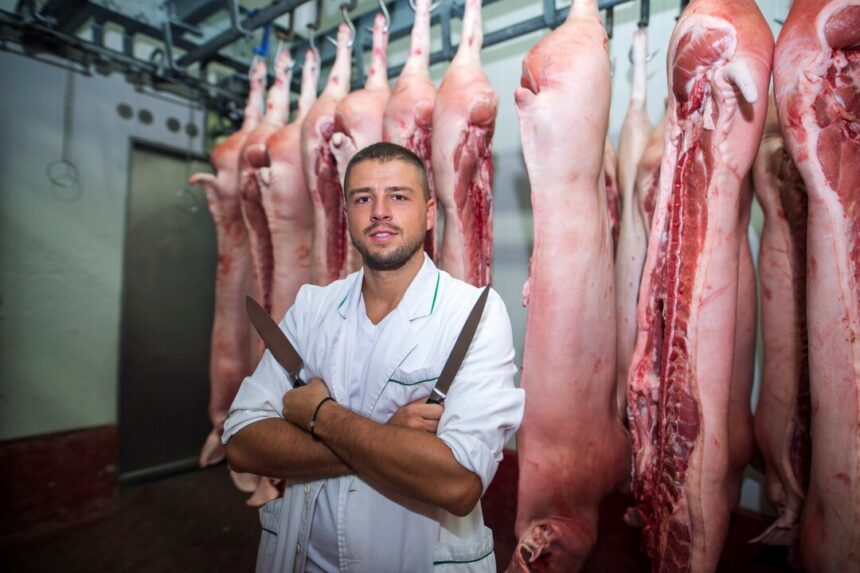Livestock farming plays a vital role in global agriculture, providing essential sources of meat, dairy, and other animal products to meet the nutritional needs of populations worldwide. In addition to fulfilling dietary requirements, livestock farming presents a myriad of opportunities for farmers to diversify their operations, enhance profitability, and contribute to economic development. In this article, we’ll explore the significant opportunities and benefits associated with meat and dairy production within the livestock farming sector.
1. Meat Production:
Livestock farming offers significant opportunities for meat production, catering to the growing demand for high-quality protein sources. Whether raising cattle, sheep, pigs, or poultry, farmers can capitalize on various meat products to meet consumer preferences and market trends.
2. Diverse Product Range:
Meat production encompasses a diverse range of products, including beef, pork, lamb, chicken, and turkey, each with its unique characteristics and culinary uses. Farmers can tailor their production systems to target specific market segments and capitalize on niche opportunities.
3. Value-Added Processing:
Value-added processing allows farmers to transform raw meat products into value-added products such as sausages, bacon, deli meats, and marinated cuts. This adds value to the products, extends shelf life, and opens up new market channels, including restaurants, supermarkets, and specialty stores.
4. Export Opportunities:
Livestock farming presents export opportunities for meat products, allowing farmers to access international markets and capitalize on global demand. Exporting high-quality meat products can generate additional revenue streams and enhance the competitiveness of domestic livestock industries.
5. Local and Organic Markets:
Consumer preferences for locally sourced and organic meat products are on the rise, presenting opportunities for farmers to differentiate their products and capture premium prices. By adopting sustainable and ethical farming practices, farmers can appeal to environmentally conscious consumers and niche markets.
6. Dairy Production:
Dairy farming is another lucrative segment of livestock farming, offering opportunities for the production of milk, cheese, butter, yogurt, and other dairy products. Dairy farms can range from small-scale operations to large commercial enterprises, catering to diverse market needs.
7. Nutritional Benefits:
Dairy products are rich sources of essential nutrients such as calcium, protein, vitamins, and minerals, contributing to overall health and well-being. As consumer awareness of the nutritional benefits of dairy increases, demand for high-quality dairy products is expected to grow.
8. Specialty Dairy Products:
In addition to traditional dairy products, there is a growing market for specialty and niche dairy products such as artisanal cheeses, organic yogurts, and lactose-free alternatives. Farmers can capitalize on these trends by diversifying their product offerings and catering to niche consumer preferences.
9. Sustainable Practices:
Livestock farming presents opportunities to adopt sustainable practices that minimize environmental impact and promote animal welfare. Sustainable dairy farming practices, such as rotational grazing, water conservation, and renewable energy use, can enhance the long-term viability of dairy operations.
10. Value-Added Processing:
Similar to meat production, value-added processing in the dairy industry allows farmers to create unique dairy products with added value and appeal. This may include flavored milks, specialty cheeses, probiotic yogurts, and premium ice creams, among others.
11. Technology Adoption:
Advancements in technology, such as precision farming, automated milking systems, and genetic selection, have revolutionized livestock farming practices. Farmers can leverage technology to improve efficiency, productivity, and profitability in both meat and dairy production.
12. Niche Markets and Direct Sales:
Farmers can tap into niche markets and direct sales channels to market their meat and dairy products directly to consumers. Farmers’ markets, farm-to-table restaurants, and online platforms offer opportunities to establish direct relationships with customers and capture higher margins.
13. Branding and Marketing:
Building a strong brand and implementing effective marketing strategies are essential for success in the meat and dairy industries. Farmers can differentiate their products through branding, storytelling, and transparent labeling, appealing to consumers’ preferences for quality, authenticity, and sustainability.
14. Government Support and Incentives:
Government support and incentives for livestock farming, including subsidies, grants, and technical assistance, can help farmers overcome challenges and seize opportunities for growth. Accessing government programs and resources can enhance the competitiveness and resilience of meat and dairy producers.
15. Collaboration and Partnerships:
Collaboration and partnerships within the meat and dairy supply chain, including farmers, processors, distributors, and retailers, can create synergies and unlock new opportunities for value creation. Building strategic alliances and networks can facilitate market access, innovation, and knowledge sharing.
Livestock farming offers abundant opportunities for meat and dairy production, catering to diverse consumer preferences and market demands. From traditional meat and dairy products to value-added specialties and niche offerings, farmers can capitalize on a range of opportunities to enhance profitability, sustainability, and resilience. By embracing innovation, adopting sustainable practices, and seizing market opportunities, livestock farmers can position themselves for success in the dynamic and evolving meat and dairy industries.







